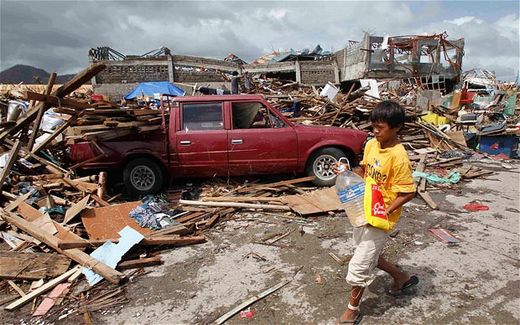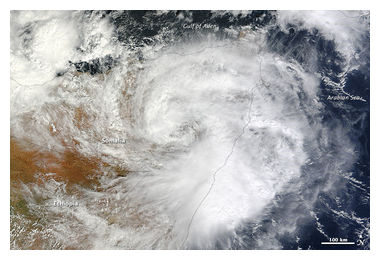
© REUTERS/Romeo RanocoTacloban City, where two out of five killed by Typhoon Haiyan were children, according to aid worker
Only when Lynette Lim started to walk into Tacloban City, a few hours after 'Super' Typhoon Haiyan wreaked unimaginable devastation across
the Philippines, did she realise how lucky she herself had been to survive the storm.
"Everything was just flattened," said Miss Lim, the Asia communications manager for Save the Children, who arrived in Tacloban with a group of aid workers assessing the potential need for help just 24 hours before Haiyan smashed into the city on Friday.
"The water was knee high and there were bodies floating in the streets. I saw several dead children. I'd say two out of every five corpses I saw were kids. Most of the houses were wooden and they were completely destroyed.
"There were trees and electrical poles strewn across the road and corrugated iron roofing that had been ripped off houses."
Making her way through the villages south of Tacloban, she discovered the
full extent of the horrific damage caused by winds that came close to 200mph, and storm surges that sent waves as high as the second storey of houses crashing ashore.
"Everywhere we went, people told us between 10 and 50 people had been killed in their communities," said Miss Lim. "Most of the families who had decided to evacuate ahead of the storm left one member behind to guard their homes and possessions. Unfortunately, most of them died."



Comment: What happened in the Philippines as a result of the recent typhoon is tragic. It is therefore also important to direct the focus where it belongs and not use this loss of life to propagate false ideas about climate change.
Warming has occurred, also on some of our neigbouring planets such as Mars, but that warming has stopped here on planet Earth and it looks more like a global cooling is on the cards as the activity on the sun is getting eerily quiet.
As for the Philippines, the lack of sufficient infrastructure has more to do with the extent of the damage seen than global warming, and that lack of sufficient infrastructure is in no small amount due to the in all but name colonial exploitation of the Philippines by the ponerological elite of the world.
Rising global temperatures on Mars melt hints at solar-system-wide, not human, cause for warming
German scientists: Solar cycle 24 points to Dalton or Maunder-like minimum, boding ill for a climate cooling
Shock Doctrine in action: Anglo-Saxon elites send warships, destroyers and special forces to 'protect' crisis-hit Philippines